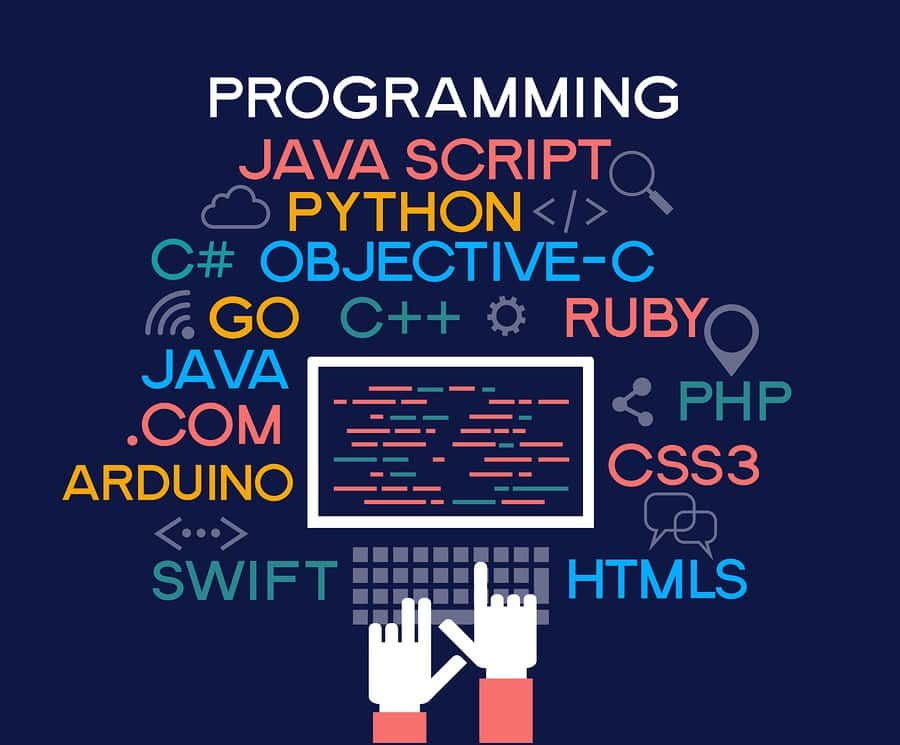Machine learning (ML). It’s undoubtedly one of the hottest topics in software development right now. And for good reason. Machine learning opens up whole worlds of new possibilities for developers, app owners and end consumers alike. From greater personalization to smarter recommendations, improved search functions, intelligent assistants, and applications that can see, hear and react – ML technology can improve an app and the experience of using it in any number of different ways.
Table of Contents
ToggleMachine learning is a subset of artificial intelligence (AI). It gives computers the ability to learn from data, and progressively improve performance on specific tasks – all without relying on rules-based programming. Machine learning algorithms find natural patterns within data, and make future decisions on the basis of them.

(Image source: medium.freecodecamp.org)
For example – an ML algorithm might analyze the music a user is playing within an app. With each song played, the alg checks if they listen to all of it, or skip to the next track on the playlist. Over time, the algorithm can predict which new songs a particular user is going to like, and can thereby make a recommendation. If these recommendations are good, the user will be more likely to continue using the app and recommend it to friends – which is great business for the app owner.
What Makes a Good Programming Language for Machine Learning?
Ok – that’s what machine learning is (further attempts at defining it can be found here), and the business benefits are clear enough. But now comes a trickier question that all appreneurs will face when they’ve got a cool new idea for a machine learning application in mind – what’s the best programming language to use?
It’s an important question. Indeed, it’s crucial that the right choice is made, for the success (or failure) of the app will hinge upon it.
For starters, a language with good machine learning libraries needs to be chosen. It will also need good runtime performance, great community support, and a healthy ecosystem of supporting packages.
There are many programming languages to pick from that tick these boxes, and with ML becoming more and more important as each year ticks by, almost every mainstream language is adding support to ease ML development tasks. In this post, however, we’re going to narrow the field down to three of the most popular – Python, C++, and Java.
Let’s see how they compare.
Popularity
According to a survey of 2,000+ data scientists and ML developers – conducted last year by Developer Economics – Python takes the prize for being the most popular programming language for machine learning. 57% of respondents were using it, with 33% prioritizing it for development.
In second place came C++ – 44% were using it, though only 19% prioritized the language. The bronze medal went to Java – 41% usage and 16% prioritization – with R and JavaScript taking the fourth and fifth spots respectively.
So, Python is our winner. But the question is – why is Python so popular? Well, a lot of it undoubtedly comes down to the fact that Python is incredibly easy to learn, and its simple syntax also makes it comparatively easy to use in practice. Python also has a huge number of libraries that are ready to use for ML and data analysis purposes.
Python is also gaining popularity in universities – no doubt due to its simplicity and abundance of libraries – so graduate engineers are more likely to know Python than C++, Java, R, or any of the other languages. Also, academics working in machine learning have historically implemented models in Python, meaning that most models published in papers are publicly available in the form of Python implementations.
For app owners, this all means that choosing Python will give you a large pool of highly-qualified developers to choose from. What’s more, the language’s popularity also provides it with a large, dedicated community – so there will be plenty of expert support out there to help you deal with any problem or complexity you may encounter. This is no less true for C++, Java, R, or JavaScript, of course – but the world really is full of Python enthusiasts these days, and strong community support may be essential if you run into problems during development.
Put simply, Python is the firm fave – but popularity, of course, shouldn’t be the only consideration.
Performance
Despite the high-demand for Python, there a few areas where it is outperformed.
C++, for instance, has the advantage of being a statically typed language, which can reduce errors. From an ease-of-use perspective, dynamically typed languages like Python may gain some superiority, as they allow for quick development, reduce complexity when it comes to collaborative development between multiple engineers/teams, and additional functionality can be implemented with less code. However, the risk of error remains an issue when building machine learning applications whose algorithms need to be trained with accuracy.
The performance crown also goes to C++, as the language creates more compact and faster runtime code. That said, there are several ways in which Python can be optimized so the code runs more efficiently. For example, the Cython extension – which is essentially Python with static typing – allows developers to easily compile to C/C++ speeds, meaning there is practically no difference.
And what about Java? Well, Java is a compiled language, meaning the code is reduced to a set of machine-specific instructions before being saved as an executable file – i.e. the source code is passed through a program called a compiler, which translates it into bytecode that the machine understands and can execute. C++ is also a compiled language. Python, on the other hand, is an interpreted language (so too are R and JavaScript, since we’ve already mentioned them). With interpreted languages, the code is saved in the exact same format in which it was first entered.

(Image source: programiz.com)
From a strictly performance perspective, compiled languages provide better general performance than interpreted languages in most cases. Compiled programs generally run faster than interpreted ones, because interpreted programs must be reduced to machine instructions each time they are executed (which, incidentally, also results in higher execution costs).
Both types of languages have their strengths and weaknesses. The two tables above and below lay these out side by side so you can see how they match up.

(Image source: upwork.com)
Simplicity and Usability
Time is money in the business world, and from an ease-of-use perspective, dynamically typed languages like Python and R certainly allow applications to be developed quickly. What’s more, given the complexity of machine learning algorithms, the less a developer has to worry about the intricacies of actually writing code, the more they can focus on what truly matters – finding solutions to problems and achieving the goals of the project. Simplicity and readability also helps when it comes to collaborative coding, or when machine learning projects need to change hands between development teams.
Of our top the programming languages, Python is the one that’s renowned for its concise, easily-readable code. C++, on the other hand, is a lower-level language, meaning it’s easier to read for the computer (hence its higher performance), though harder to read for human programmers. Java, too, is a verbose programming language, meaning Java-based applications need many more lines of code to perform the exact same operations than, say, Python.
That said, the recently announced open source “Gandiva” project aims to optimize both Java and C++ code for specialized hardware, which would potentially improve their standings as competitive options for machine learning projects. There are plans to add support for Python, too, mind you.
So – Do We Have a Winner?
Well, no. That might seem like a cop out, but it would be irresponsible to suggest that there is one absolute over and above all “best” programming language for any given machine learning application. In the end, it all depends on what you want to build and what problem you’re trying to solve. Given everything discussed in this article, it might seem that Python takes the prize. Indeed, there’s a reason it’s so popular – with its thriving community, wealth of libraries, academic favor, and simple syntax promoting rapid development and testing of complex ML algorithms, Python does seem to have an awful lot going for it.
But, specific projects need specific technologies – and the truth is it’s impossible to say that either Python, C++, Java, R, JavaScript or anything else will always provide you with the solution you need. Ultimately, you will need to do your research, outline clear goals for your project, consult with experts, and make an informed decision from there.
Summary
Best Machine Learning Programming Language
For starters, a language with good machine learning libraries needs to be chosen. It will also need good runtime performance, great community support, and a healthy ecosystem of supporting packages.There are many programming languages to pick from that tick these boxes, and with ML becoming more and more important as each year ticks by, almost every mainstream language is adding support to ease ML development tasks. The three most popular – Python, C++, and Java.






